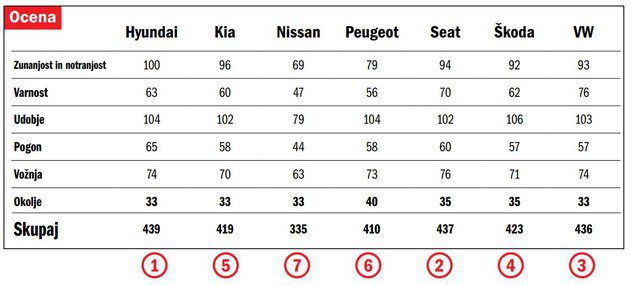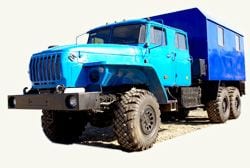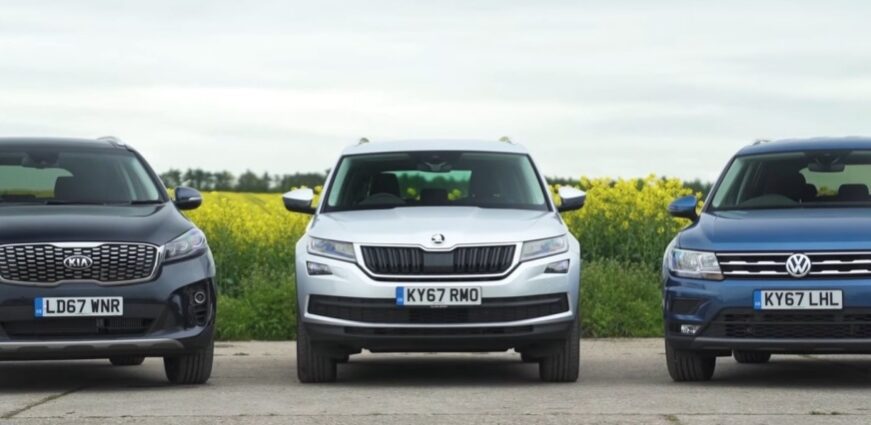
Comparison test: Hyundai Santa Fe, Kia Sorento, Nissan X-TRAIL, Peugeot 5008, Seat Tarraco, Škoda Kodiaq, Volkswagen Tiguan Allspace // Magic seven
The CR-V would have come in handy as a hybrid (in terms of performance and consumption, it would be comparable to diesels or even better), but the hybrid CR-V will not appear until February, so it is clear that it will be on sale. The INTA center near Madrid, where we did most of the test (apart from driving on open roads), could not be delivered. So, at least for a basic comparison, we settled on the only engine currently available: a turbocharged gasoline engine coupled with a manual transmission.
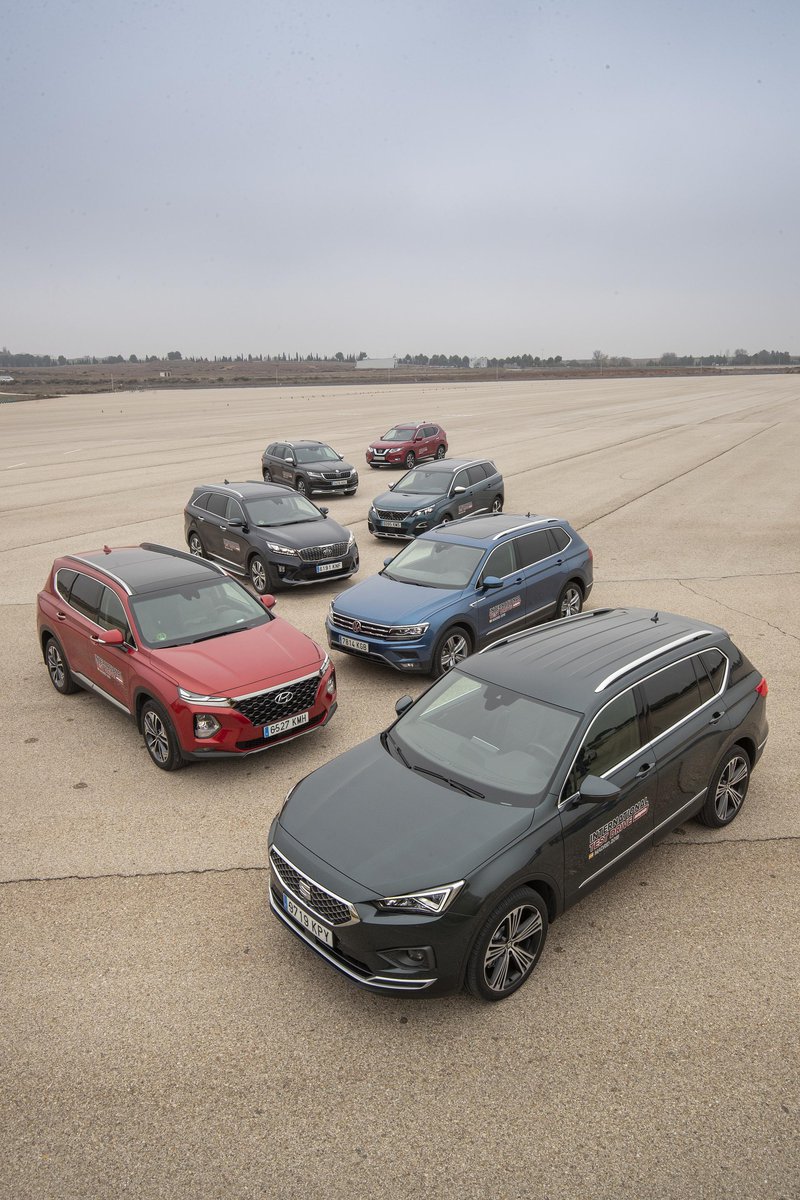
Why diesels? Because neither is yet available as a plug-in or hybrid, and you can hardly expect the typical user of a seven-seater SUV (which means at least a higher load on passengers and luggage) to opt for the petrol version. With cars this big and (when fully loaded) heavy, diesel is still in the lead – with five-seat cars that usually drive even more empty, you would dare to write otherwise.
But this time we compared these large SUVs as seven-seat cars. At first glance, this may not seem so important. A good car is just a good car, right? However, evaluation quickly showed that this requirement had a large impact on the final results. The accessibility of the third row of seats can be very problematic in a car that is otherwise very good, due to the low roof, and the quality of seating there (not only the seats, but also the comfort of the chassis) can be completely different from what you expect. And seven seats also means increased demands on air conditioning and at the same time can greatly undermine the idea of the practicality of the trunk. So the final order may be different from what you expected, but since we have tested the cars very well, those of you who choose from this class but need only five places will still be able to find enough information to take this Test (except when it comes to the trunk of five-seater versions) helped out a lot.
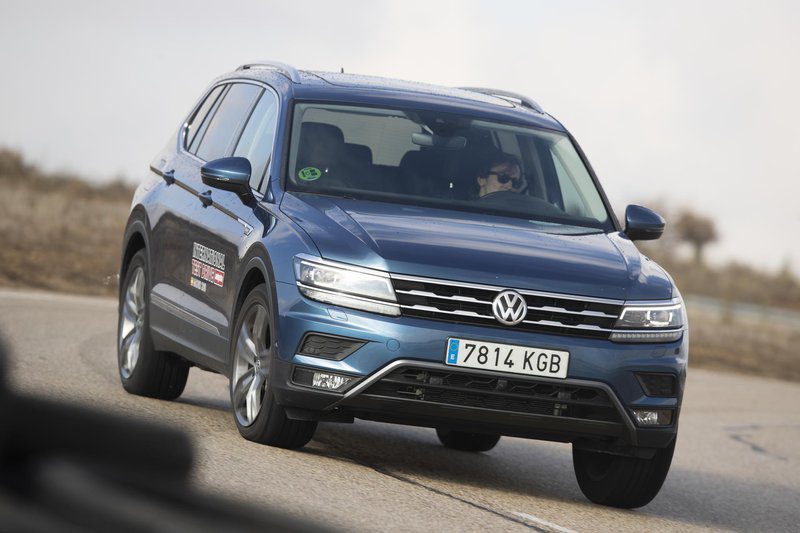
Competition? Hood. More or less fresh three Volkswagen Group (Tiguan Allspace and a seven-seater version of the brand new Tarrac, which has not yet conquered Slovenian roads, and Kodiaq), and (again, quite fresh) twins Hyundai Santa Fe and Kia Sorento, sporty and elegant Peugeot (but among eight) the only all-wheel drive) 5008 and the aging Nissan X-Trail. And, of course, CR-V.
Let's start with the outer form. The freshest and sportiest is undoubtedly the Tarraco, but it must be admitted that the 5008 is no less attractive. Tiguan and Škoda look more classically laid-back, Hyundai and Kia look rather massive, but still quite compact. In X-Trail? Despite its age, it's not far behind, if at all - the exact opposite of what we can write for a salon in terms of design and overall. There X-Trail years still know each other. Not the most respectable plastic, scattered appearance, ergonomics are not at the level of competitors. The longitudinal offset of the driver's seat is too small for taller drivers, the sensors are analog, between them is an opaque LCD screen. The infotainment system is also outdated by today's standards - the cabin is small, the graphics are cluttered, only Apple CarPlay and AndroidAut have been tested. There was also no wireless charging for a mobile phone in the car, and although it seats seven, it only has one USB port. Well, yes, it's not the only one that burns out completely, as you'll find out below, but in general, we can say that it's time for car manufacturers to start installing as many USB ports in a car as there are seats for passengers. … In our opinion, they are much more important and necessary than the old round car sockets.

The 5008 also only had one USB socket, but that's all we can blame on the inside. Well, almost everything: for tall drivers, the ceiling can be if the panoramic roof in the car, which was in the test 5008, is slightly lowered. But: the fully digital meters are great, transparent and flexible enough, the infotainment system also has all the necessary features and is quite intuitive and transparent. Here he lost a few points, because all functions (including, for example, air conditioning) have to be controlled through the infotainment screen, but this is the fault of the more conservative "jury" who cannot accept the fact that the future will be without physical switches.
The Tiguan Allspace and Tarraco received equally good marks for the digital part of the car. LCD indicators, a great infotainment system and a host of assistive systems. And since the interior is also closer in design to the 5008 (which could be practically a model in this respect) than left-handed Škoda or slightly ergonomic Far Eastern competitors, they got a nice edge here. The damage has been repaired by classic gauges as well as a much more compact interior that doesn't evoke the same sense of prestige and quality as Seat and Volkswagen. All three are said to have a third divisible bench in the second row, not separate seats (and Seat seems to have the least longitudinal space despite being the same size), that the rear row seats are quite bearable and that the trunk is less useful to them. than a five-seater. The bottom is almost perfectly flat, but not clean, and Škoda impressed with the baggage management system with a bunch of hooks that we can hang our bags on to keep them from running around the trunk. Nissan, Honda and Peugeot, for example, completely forgot about such solutions (that is, at least hooks).
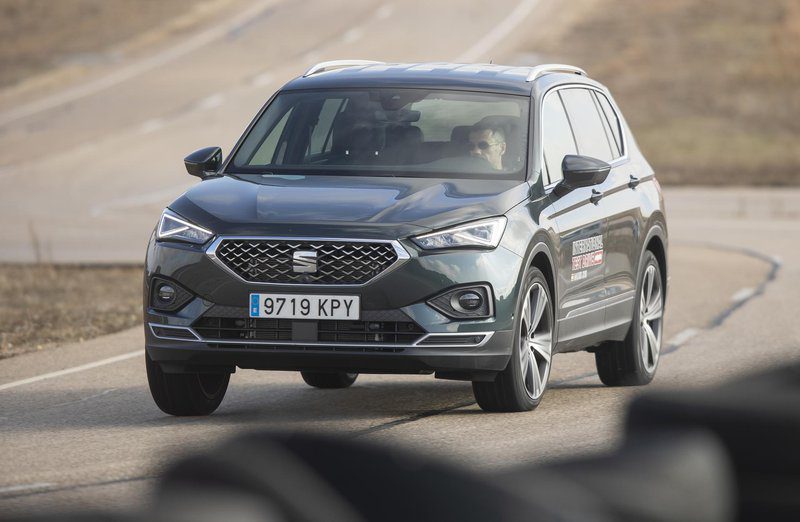
The Korean couple is very similar inside, but at the same time very different. Both have a well-adjustable split rear bench and a usable third row of seats, flat bottom otherwise (usually for a seven seater) shallow trunk, plenty of knee room in the second row (they're some of the best here), but the Kia lost points in comparison. with Hyundai due to the classic analog gauges (Hyundai has digital), fewer USB ports (Hyundai only has four) and the Hyundai seats were generally more comfortable. The true opposite is the Nissan: cramped behind the wheel, with too-short seats and an ergonomically flared instrument panel and switches on it. The X-Trail simply cannot hide the fact that it is the oldest of the seven.
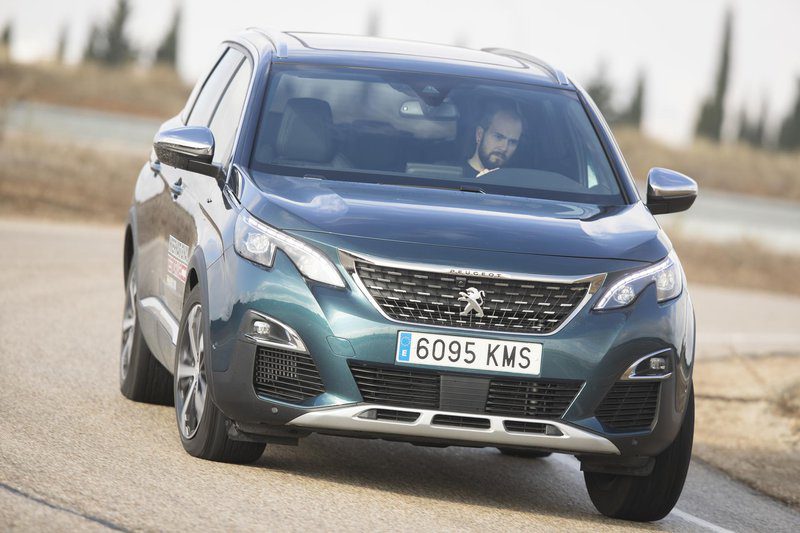
He does not hide it even in the back row of seats. Access is organized reasonably well, but the combination of uncomfortable seats, a rather cramped cabin in the back (the meter is the worst here), and a rather uncomfortable chassis for passengers makes it a poor choice for those who must sit in a chair. third row. The Honda isn't much better here either, and the ease of use with seven passengers in the car, as we've written, has earned a lot of points for Peugeot, too. This, for example, is noticeably the lowest level of headroom in the second row (89 centimeters compared to the seat's 97 centimeters), meaning you'll have to flex a lot more when climbing in the back row, as well as feeling in the rear (also due to small windows) is quite crowded - although in terms of centimeters in the third row 5008 is one of the best (including for the head, since the panoramic roof no longer takes up space above the third row of seats.
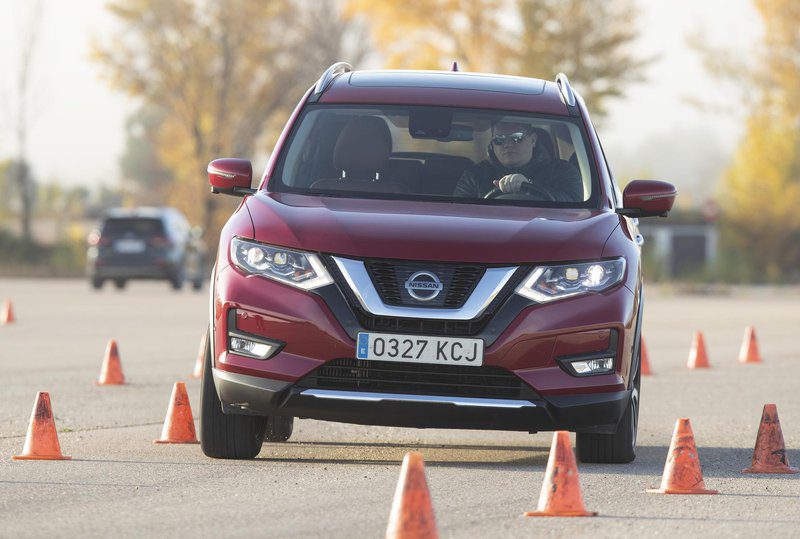
The best marks for the third row of seats were given to both Koreans, also because it is easy to lift and fold the seats with one hand, and because there is a lot of room in the length and around the elbows, but we would like a little more substantial offset of the bench in the second row.
And the VAG trio? Yes, Al, that sounds pretty crap to me. It looks like BT doesn't work for me either.
Hyundai, for example, has the best air conditioning for rear passengers, while Nissan has the worst. All the others are somewhere in between and are good enough in this area.
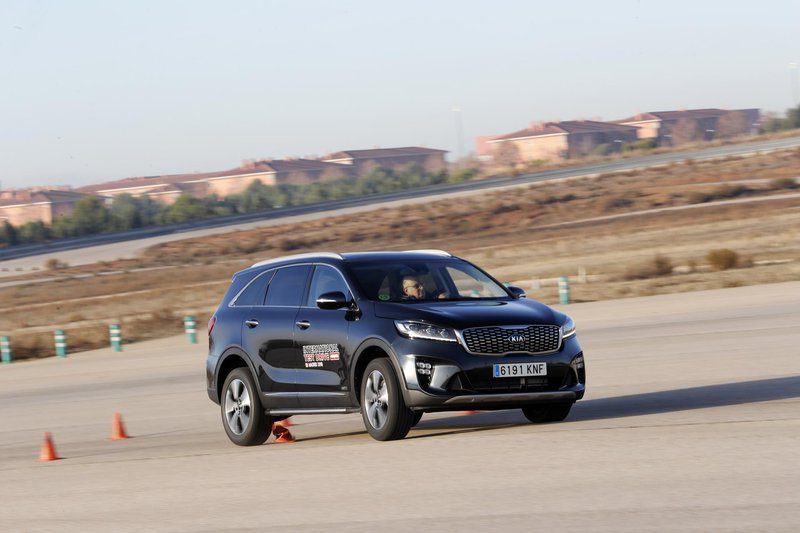
A completely different picture is observed with the comfort of the chassis. The Peugeot stands out here (which, as you'll be able to read in a few lines, doesn't punish it with bad road position), where even the rear passengers won't suffer too many bumps. Hyundai and Kia are also comfortable with the chassis (the former is slightly better here, as it has slightly more consistent suspension and damping action in the rear, which means less long wave bouncing), but both are slightly louder in both noises. from under the wheels and wind noise on the body. The Tarraco has a well-coordinated but much sportier chassis that will make drivers and passengers who want a sportier set-up feel better - but it can get a little jittery at high speeds if the road is bad. The Tiguan Allspace is also stiff, but not at all jumpy, while the Škoda is much calmer and softer. Nissan? Very soft, even too big, as the cushioning is sometimes difficult to control the vibrations of the body.
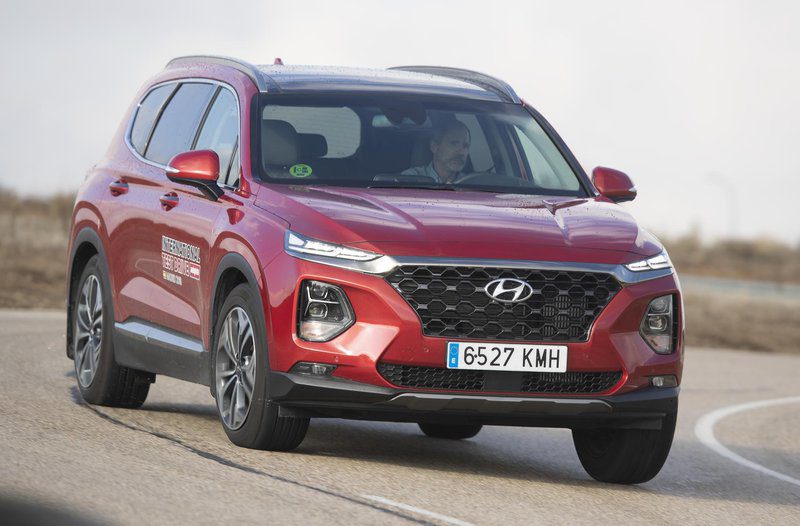
If we dynamically drive such cars into corners, we are, of course, doing stupid things, because they are not designed for this. But still: the idea of how to react in critical moments when you should avoid a collision, and the course, and dodging obstacles and slalom between the cones gives very well. Here is the worst Nissan, which has the least grip, extremely aggressive ESP, which sometimes makes things worse (causes even more understeer) and usually gives the impression that it just doesn't like cornering. We expected the same from Hyundai and Kia, but we were wrong. The first is a bit of understeer, with well-controlled sway and body lean, and the Kia, despite its fairly comfortable chassis, is already a bit anti-sport. The rear end likes to slip (ESP allows you to be safe), but not so much that you can write anything other than cornering assistance. Tarraco makes the most sporty impression, but is not the most beautiful and dynamic. Its steering is precise, body lean is slight, but overall even better (and among the best compared to it) is the 5008, in which the engineers found for such a car an almost perfect compromise between comfort and sportiness. What's more: both are at such a high level that it's hard for the driver to believe he's sitting in a car that also has the longest belly-to-ground distance.
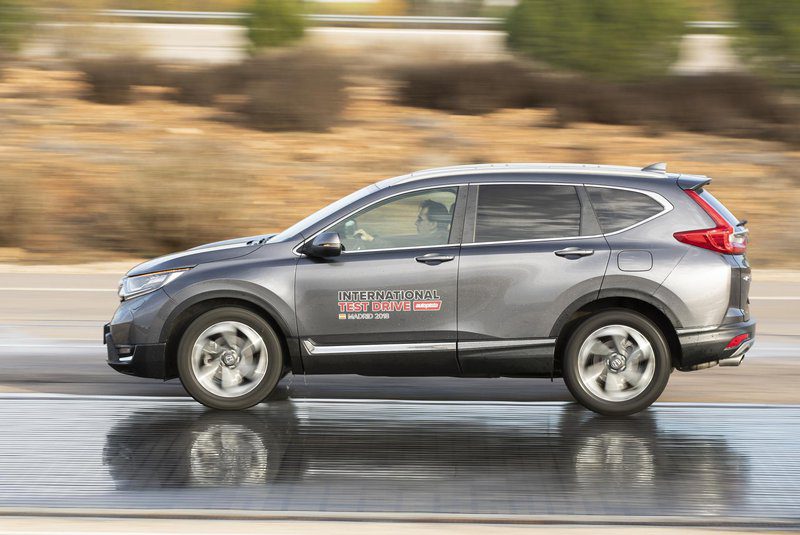
As we wrote at the beginning: the power units were diesel, with a capacity of 180 to 200 horsepower and an automatic transmission. Apart from the petrol Honda with a manual transmission, which is therefore considered separately, only the Tiguan Allspace stood out here, which we got with a weaker, 150-horsepower diesel. When accelerated at city and suburban speeds, it did not even differ much from its competitors in the group, but the difference was noticeable at highway speeds. Well, we didn't even consider it a disadvantage, because of course the Allspace is also available with a more powerful diesel engine, because it's also quite cheaper. Consumption? When driving economically, they ranged from 5,9 liters (Hyundai) to 7 liters (Nissan). Peugeot was pretty thirsty here (7 liters), as was Seat. But on the other hand, when simulating everyday driving to and from work, Hyundai's consumption significantly increased (up to 7,8 liters), while in the 5008, for example, the growth was relatively smaller (from 7 to 7,8). We more than took this second fuel rate as a benchmark, where the Tiguan was the best, but mainly due to the lower performance engine, among the rest were Tarraco, Škoda, Hyundai and those close to 5008, Kia deviated a little, and Nissan was even more voracious from petrol Honda!
What about prices? We didn't directly compare them when scoring because the pricing in all the markets the participating media editors came from is simply too high. Therefore, they are not taken into account in the final results - but the bottom line is that for some only the final results are important, while others will prefer to consider those categories that they consider the most important. And since prices depend at least as much on the negotiating skills of the importer as well as on the options available and financial discounts (but again vary widely from market to market), differences between markets can be significant. But if we try to at least roughly equalize prices, Nissan and Peugeot are at the top of the range, Hyundai (and smaller Kia) are close, and the Kodiaq and Tiguan Allspace are or will be (the 190-horsepower Allspace is not yet available) noticeably expensive. It is likely that when prices become available, the image will apply to Tarraco as well. Honda? With a petrol engine, the price is affordable and, like a comparable hybrid, it probably won't be that high again.
But even if price (and warranty) also affects the ratings, the winner will remain the same. Santa Fe currently offers the most to those in need of a seven-seater SUV and not very picky about design or driving. But on the other hand, 5008 is only in sixth place in terms of the number of points, and taking into account the price, it can also be one place higher. In the end, the relationship between price and what a car has to offer also depends a lot on expectations and, above all, requirements.

